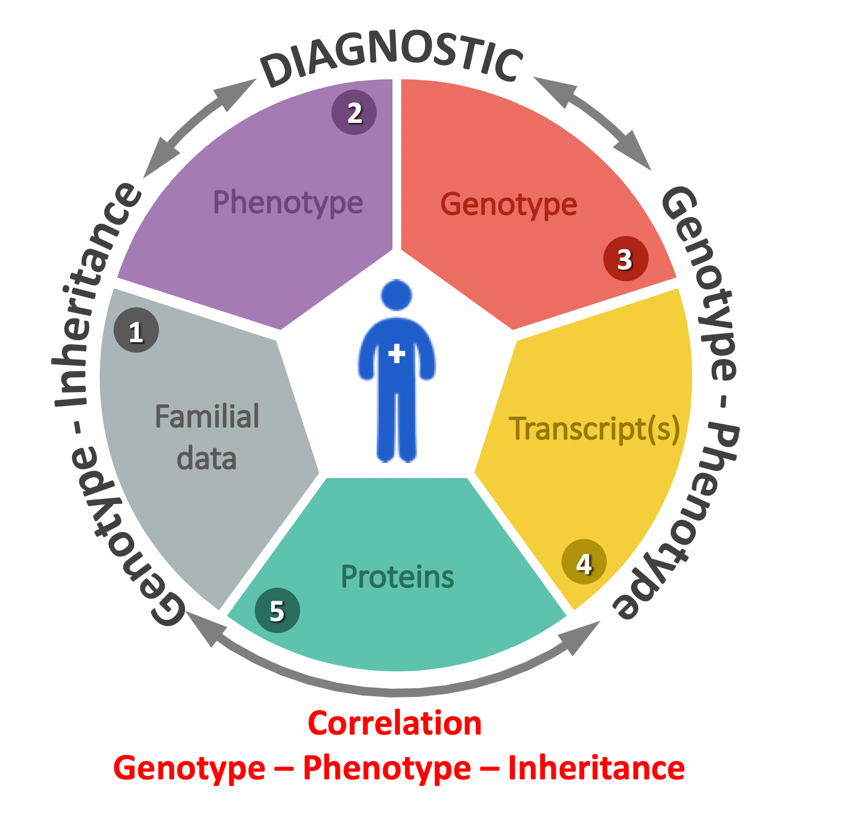Research program : Hereditary neuromuscular diseases
Home > Team 5 > Research program > Axe 1
Genetics of titinopathies and other myopathies
A. Perrin, M. Benkirane, A. Girardet, M-C Vincent, M. Koenig, M. Cossée
Myopathies are a group of phenotypically and genetically heterogeneous diseases. High-throughput sequencing (Next Generation Sequencing, NGS) has revolutionized the understanding of the molecular mechanisms of these diseases by allowing the sequencing of all the genes of interest in a single step. Our research work takes advantage of these technological evolutions in order to participate in the understanding of the molecular mechanisms of myopathies, in particular titinopathies, to identify new phenotype-genotype associations and to search for new myopathy genes. Our work is linked to the clinical teams of the Reference Center for Rare Neuromuscular Diseases AOC (Atlantic-Occitanie-Caribbean) and the Filnemus rare neuromuscular diseases health network.
Identification of new phenotype-genotype associations and search for new myopathy genes
The implementation of targeted NGS analysis strategies on a large panel of myopathy genes in patients with unlabeled myopathy has allowed us to broaden the mutational spectrum of genes and to identify new phenotype-genotype associations (Géraud et al., 2020; Krahn et al., 2019; Yauy et al., 2018; Zenagui et al., 2018).
Another goal is to search for new genes involved in myopathies by performing whole exome sequencing (WES), as well as whole genome sequencing (WGS) coupled with muscle RNA sequencing (RNASeq) approaches in patients with well-characterized phenotypes and no identified genetic etiology after targeted NGS analysis (Pergande et al., 2020).
Pathophysiology of titinopathies
Titinopathies are inherited skeletal and/or cardiac myopathies due to alterations in titin, a giant sarcomeric protein that plays a crucial role in maintaining the integrity of the sarcomeric structure. The emergence of NGS made possible the exhaustive analysis of the 363 exons of the titin gene (TTN), suggesting that they are a major cause of myopathies. However, the clinical pictures are very variable in terms of location of the muscle damage and age of onset (from antenatal to late adulthood) of muscle damage. The mode of inheritance is also variable, dominant or recessive, without the molecular basis of this great heterogeneity being clearly established. Recent studies of transcripts have shown a complex splicing pattern according to muscle location and temporality (fetal or post-natal). Our work is based on a strategy of integrated analysis of phenotypic, genetic and biochemical data of the gene, transcripts and titin protein in myopathic patients suspected of having a titinopathy, in order to highlight new phenotype-genotype associations, and to participate in the international effort to understand the molecular mechanisms of the modes of inheritance and the phenotypic variability of titinopathies (Perrin et al., 2020a, 2020b, 2021).
This work benefits from national recruitment thanks to the establishment and co-coordination by Dr Cossée of the national Filnemus titin consortium.
Fundings


